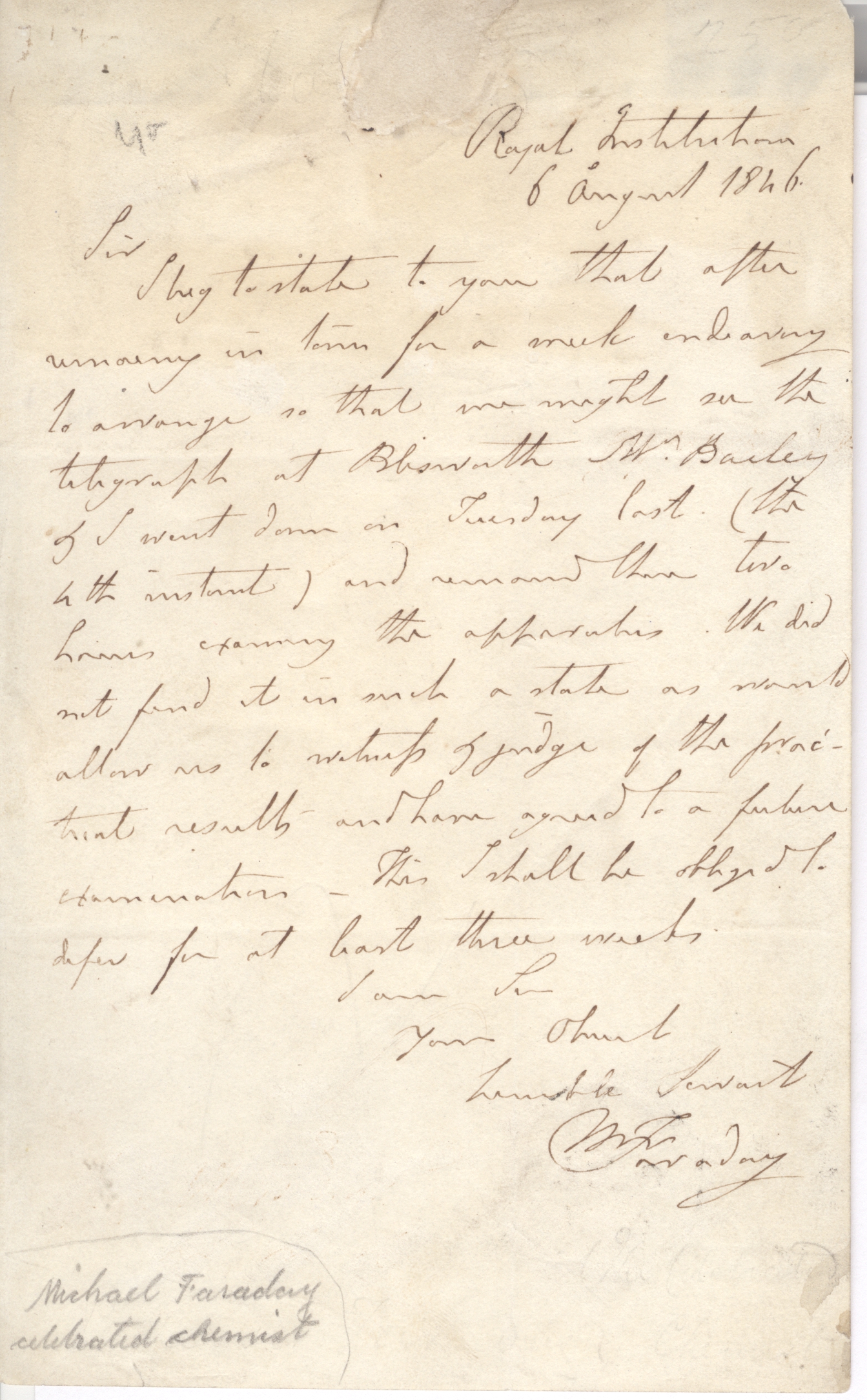
FARADAY EXAMINES A RAILWAY TELEGRAPH AT BLISWORTH
FARADAY
(Michael, 1791-1867, Chemist & Physicist)
Fine Autograph Letter Signed to an unnamed correspondent
saying that "after remaining in town for a week endeavouring to arrange so that we might see the telegraph at Blisworth, Mr Barley & I went down on Tuesday last ... and remained there two hours examining the apparatus. We did not find it in such a state as would allow us to witness & judge of the practical results and have agreed to a future examination. This I shall be obliged to defer for at least three weeks ...", 1 side 8vo., Royal Institution, 6th August
Blisworth Station opened in 1839 but the people of Blisworth were unhappy with the 'crude' station and lobbied for a better one which was built in 1842 with 'First Class' status which meant all trains would stop there. Blisworth became a junction station in 1845 when a branch line to Peterborough was opened via Northampton.
The concept of "telegraphic railways" was proposed by W F Cooke in 1842. Railway signal telegraphy did not change in essence from Cooke's initial concept. Each line of railway was divided into sections of several miles length. Entry to and exit from the block was authorised by electric telegraph and signalled by the line-side semaphore, so that only a single train could occupy the rails. Faraday was very involved in the development of telegraphy and he and Wheatstone discovered the merits of gutta-percha as an insulator and in 1845, the latter suggested that it should be employed to cover the wire which was proposed to be laid from Dover to Calais.
Item Date:
1846
Stock No:
39176

<< Back